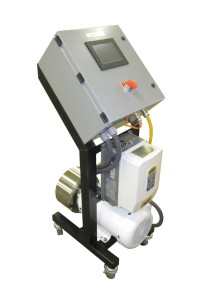Technology
As a liquid passes through the SPR it is subjected to “controlled cavitation”. The heart of the device is a specially designed rotor that spins. The spinning action generates hydrodynamic cavitation in the rotor cavities away from the metal surfaces. The cavitation is controlled and therefore there is no damage. As microscopic cavitation bubbles are produced and collapse, shockwaves are given off into the liquid which can heat and/or mix.
•The heart of the technology is a specialized rotor
•The rotor has dead-ended cavities
•Spinning creates low pressure at the cavity bottoms
•The low pressure zones collapse releasing shockwaves
The SPR technology represents a new and innovative way to apply energy to liquids. The technology has two distinct capabilities:
- Scale-Free Heating
- Extraction
- Mixing (Increased Mass Transfer)
- Gas-Liquid
- Liquid-Liquid
- Liquid-Solid
While varying by application, one or more of these significant benefits will be realized through the use of an SPR over conventional technologies:
- Process intensification and acceleration
- Improved process efficiencies (in time, operating costs, and/or capital costs)
- Improved product quality, yield and/or raw material savings
- Elimination or reduction of process downtime from maintenance requirements
- More effective and efficient mixing and increase transfer rate
- Low power mixing for most all applications
See the Action of Cavitation in Our Clear Demo Unit
(This is a rotor spinning in water at 3600 rpms in a clear acrylic housing that is stilled by a stroboscope. You will see the action of cavitation in the bottom of each of the holes.)
During the past several years of intensive research, Hydro Dynamics has studied the production of shock waves for the purpose of transforming fluids. The SPR represents a paradigm shift for industry and is truly a next generation technology. Read more in our publications.





